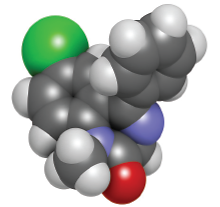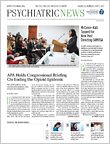Doxycycline Disrupts the Retention Of Fearful Memories
The antibiotic doxycycline may be able to disrupt the retention of fearful memories, according to a study published in Molecular Psychiatry.
While the trial assessed fear response in healthy adult volunteers, the authors of the study said the findings suggest doxycycline could one day be used as a therapy for people with posttraumatic stress disorder (PTSD).
Researchers at the University of Zurich randomly assigned 76 adults to receive either a single dose of 200 mg of doxycycline or placebo. About three hours later, the adults participated in a task in which they learned to associate a specific color (blue or red) with a mild electric shock. One week later, the participants returned to repeat the task, only this time the colors were paired with loud tones.
The fear response (measured by eye blinks after a color appeared on screen) of participants who took doxycycline was 60 percent lower than those in the placebo group. Participants in the doxycycline group did not differ from those in the placebo group on memory and attention tests.
Doxycycline targets enzymes known as matrix metalloproteases (MMP), which are known to be important in remodeling synapses in the brain.
The findings “suggest that tetracycline antibiotics—all of which are MMP inhibitors—could be used for primary prevention of fear memory acquisition in persons known in advance to be potentially exposed to trauma,” the authors wrote.
Benzodiazepine Use Associated With Pneumonia Risk in Alzheimer’s Patients
Patients with Alzheimer’s disease who take benzodiazepines are nearly 30 percent more likely to develop pneumonia than those not taking the medications, reports a study published in the Canadian Medical Association Journal. This risk appears greatest during the first 30 days of treatment.
Researchers in Finland used national registry data to identify 5,232 people with Alzheimer’s taking benzodiazepines and 3,269 taking related Z-drugs. These patients were matched with an equal number of people with Alzheimer’s not taking either medication.
The researchers then evaluated the effect of incident benzodiazepine use on pneumonia risk, both overall and in relation to duration of use.
Collectively, patients taking either benzodiazepines or Z-drugs had about a 1.22-fold increased risk of developing pneumonia. When analyzed separately, benzodiazepine use was associated with a 1.28-fold increased risk of pneumonia, whereas Z-drug use did not confer any statistically significant risk. Among benzodiazepine users, the increased risk was observed only during the first 30 days of use (hazard ratio=2.09).
The authors noted one possible explanation for the increased risk of pneumonia associated with benzodiazepines may be related to the more pronounced sedative effects of these drugs, especially at the start of medication use, which can increase the risk of aspiration.
The authors also cautioned that their analysis could not conclude that Z-drugs are safer than benzodiazepines for patients with Alzheimer’s disease, since the study was not designed for a direct comparison of these groups.
DBS Found to Reduce Severe Tics
Deep brain stimulation (DBS) appears to be safe and effective at reducing vocal and motor tics in young adults with severe Tourette syndrome, according to researchers at NYU Langone Medical Center.
The multidisciplinary team tracked the clinical outcomes of 13 patients aged 16 to 33 with refractory Tourette syndrome, who underwent medial thalamic DBS. This experimental technique involves implanting electrodes into the brain’s medial thalamus that are connected to a stimulator implanted under the skin. All patients were followed for at least six months and had both preoperative and postoperative assessments of tic severity using the Yale Global Tic Severity Scale (YGTSS).
The patients showed an average decrease of 37 percent in total tic severity at their first postoperative visit, and 50 percent at their most recent visit. In addition to the YGTSS, the patients took a survey on their symptoms six months after their procedure, and all 13 reported significant symptom improvements and stated they would have the surgery again.
Two of the 13 patients in the study experienced device-related complications that required additional surgery, but otherwise side effects were minimal.
This report was published in the Journal of Neurosurgery.
Accelerated Aging Not Identified in Schizophrenia Brain Samples
The accelerated aging hypothesis of schizophrenia suggests that the physiological changes throughout the body associated with normal aging occur earlier in people with schizophrenia. A study published in NPJ Schizophrenia in March suggests that in at least one region of the brain, there is no evidence to support accelerated neurological aging.
For the study, a team of researchers at the University of Pittsburgh used a technique known as “methylation aging” to estimate the biological age of postmortem brain tissue samples from 22 people with schizophrenia and 22 matched controls of various ages; the samples all came from the superior temporal gyrus.
DNA methylation age correlated with chronological age in people who had schizophrenia and non-psychiatric controls. There was also no difference in age acceleration between the two groups when methylation patterns were assessed over time.
The authors noted that larger studies using samples from multiple brain regions will be necessary to confirm these findings and that these results do not preclude the possibility that schizophrenia leads to accelerated aging in peripheral tissues.
“An intriguing subsequent question is whether a peripheral acceleration of aging could result from neurodevelopmental brain pathologies,” the authors wrote. ■




